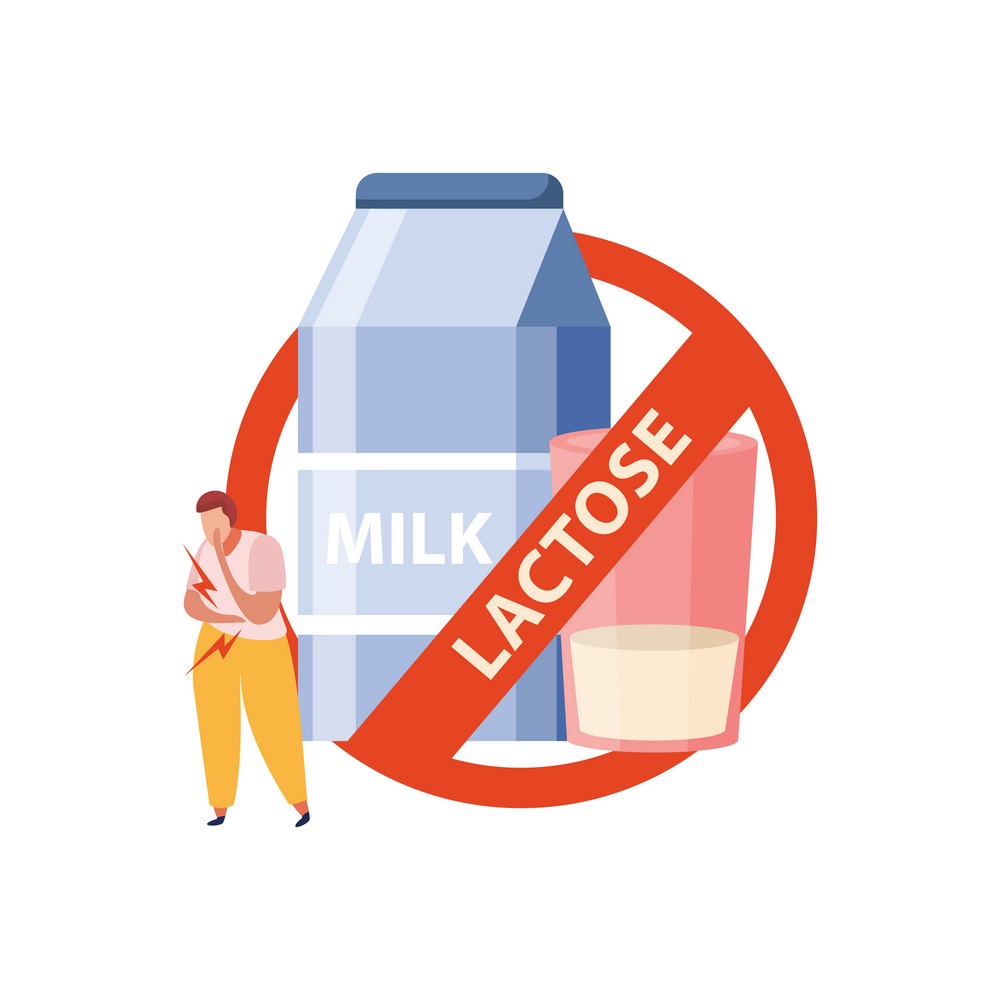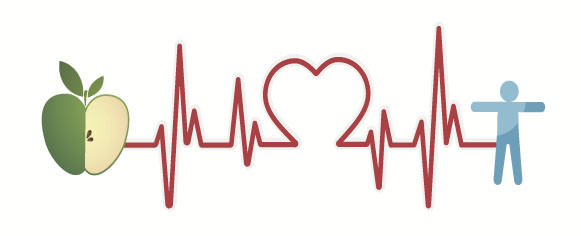Lactose Intolerance
OVERVIEW | CAUSES | RISK FACTORS | SYMPTOMS | COMPLICATION | DIAGNOSIS | TREATMENT | PREVENTION | REFERENCES

OVERVIEW
People with lactose intolerance are unable to fully digest the sugar (lactose) in milk. As a result, they have diarrhea, gas and bloating after eating or drinking dairy products. The condition, which is also called lactose malabsorption, is usually harmless, but its symptoms can be uncomfortable.
Too little of an enzyme produced in your small intestine (lactase) is usually responsible for lactose intolerance. You can have low levels of lactase and still be able to digest milk products. But if your levels are too low you become lactose intolerant, leading to symptoms after you eat or drink dairy.
Most people with lactose intolerance can manage the condition without having to give up all dairy foods.
CAUSES
Lactose intolerance occurs when your small intestine doesn't produce enough of an enzyme (lactase) to digest milk sugar (lactose).
Normally, lactase turns milk sugar into two simple sugars — glucose and galactose — which are absorbed into the bloodstream through the intestinal lining.
If you're lactase deficient, lactose in your food moves into the colon instead of being processed and absorbed. In the colon, normal bacteria interact with undigested lactose, causing the signs and symptoms of lactose intolerance.
There are three types of lactose intolerance. Different factors cause the lactase deficiency underlying each type.
Primary lactose intolerance
People who develop primary lactose intolerance- the most common type- start life producing enough lactase. Infants, who get all their nutrition from milk, need lactase.
As children replace milk with other foods, the amount of lactase they produce normally drops, but usually remains high enough to digest the amount of dairy in a typical adult diet. In primary lactose intolerance, lactase production falls off sharply by adulthood, making milk products difficult to digest.
Secondary lactose intolerance
This form of lactose intolerance occurs when your small intestine decreases lactase production after an illness, injury or surgery involving your small intestine. Diseases associated with secondary lactose intolerance include intestinal infection, celiac disease, bacterial overgrowth and Crohn's disease.
Treatment of the underlying disorder might restore lactase levels and improve signs and symptoms, though it can take time.
Congenital or developmental lactose intolerance
It's possible, but rare, for babies to be born with lactose intolerance caused by a lack of lactase. This disorder is passed from generation to generation in a pattern of inheritance called autosomal recessive, meaning that both the mother and the father must pass on the same gene variant for a child to be affected. Premature infants can also have lactose intolerance because of an insufficient lactase level.
RISK FACTORS
Factors that can make you or your child more prone to lactose intolerance include:
- Increasing age. Lactose intolerance usually appears in adulthood. The condition is uncommon in babies and young children.
- Ethnicity. Lactose intolerance is most common in people of African, Asian, Hispanic and American Indian descent.
- Premature birth. Infants born prematurely might have reduced levels of lactase because the small intestine doesn't develop lactase-producing cells until late in the third trimester.
- Diseases affecting the small intestine. Small intestine problems that can cause lactose intolerance include bacterial overgrowth, celiac disease and Crohn's disease.
- Certain cancer treatments. If you've had radiation therapy for cancer in your stomach or you have intestinal complications from chemotherapy, your risk of developing lactose intolerance increases.
SYMPTOMS
The signs and symptoms of lactose intolerance usually begin from 30 minutes to two hours after eating or drinking foods that contain lactose. Common signs and symptoms include:
- Diarrhea
- Nausea, and sometimes, vomiting
- Stomach cramps
- Bloating
- Gas
When to see a doctor
Make an appointment with your doctor if you frequently have symptoms of lactose intolerance after eating dairy foods, particularly if you're worried about getting enough calcium.
COMPLICATIONS
Milk and other dairy products contain calcium, protein and vitamins, such as A, B12 and D.
Lactose also helps your body absorb a number of other minerals, such as magnesium and zinc.
These vitamins and minerals are important for the development of strong, healthy bones.
If you're lactose intolerant, getting the right amount of important vitamins and minerals can prove difficult.
This may lead to unhealthy weight loss and put you at increased risk of developing the following conditions:
- Osteopenia – where you have a very low bone-mineral density; left untreated, it can develop into osteoporosis
- Osteoporosis – where your bones become thin and weak, and your risk of breaking a bone is increased
- Malnutrition – when the food you eat does not give you the nutrients essential for a healthy functioning body; this means wounds can take longer to heal and you may start to feel tired or depressed
If you're concerned that dietary restrictions are putting you at risk of complications, you may find it helpful to consult a dietitian.
They can advise you on your diet and whether you require food supplements.
DIAGNOSIS
Your doctor might suspect lactose intolerance based on your symptoms and your response to reducing the amount of dairy foods in your diet. Your doctor can confirm the diagnosis by conducting one or more of the following tests:
- Hydrogen breath test. After you drink a liquid that contains high levels of lactose, your doctor measures the amount of hydrogen in your breath at regular intervals. Breathing out too much hydrogen indicates that you aren't fully digesting and absorbing lactose.
- Lactose tolerance test. Two hours after drinking a liquid that contains high levels of lactose, you'll undergo blood tests to measure the amount of glucose in your bloodstream. If your glucose level doesn't rise, it means your body isn't properly digesting and absorbing the lactose-filled drink.
TREATMENT
In people with lactose intolerance caused by an underlying condition, treating the condition might restore the body's ability to digest lactose, although that process can take months. For other causes, you might avoid the discomfort of lactose intolerance by following a low-lactose diet.
To lower the amount of lactose in your diet:
- Limit milk and other dairy products
- Include small servings of dairy products in your regular meals
- Eat and drink lactose-reduced ice cream and milk
- Add a liquid or powder lactase enzyme to milk to break down the lactose
It can’t be prevented and there isn’t a cure for it. But it’s easily treated. Limit the amount of food and drink you have that contains lactose. You can also take lactase enzyme supplements to help your body digest lactose.
If you limit milk and other dairy products, you may not get enough calcium and vitamin D. Talk to your doctor about taking calcium supplements with vitamin D and eating calcium-rich foods, such as leafy greens, broccoli, soybeans and some seafood like salmon.
REFERENCE
- https://www.nhs.uk/conditions/lactose-intolerance/
- https://www.mayoclinic.org/diseases-conditions/lactose-intolerance/
- https://www.niddk.nih.gov/health-information/digestive-diseases/lactose-intolerance
- https://www.health.harvard.edu/a_to_z/lactose-intolerance-a-to-z






































































































